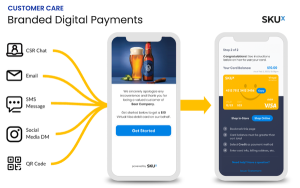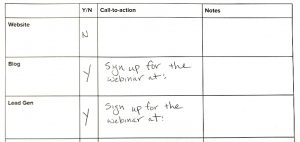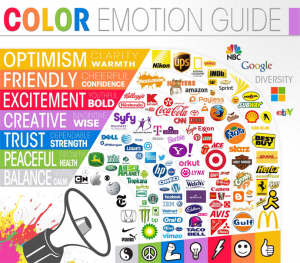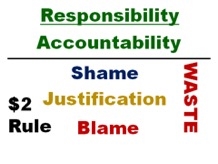Content marketers get a lot of criticism for linkbaiting and cheap SEO hacks, but the truth is, most of us really do want to publish content that is genuinely entertaining or useful to our audience. Sharing is a vital part of content distribution, and people don’t tend to share what they don’t find valuable. The problem is that coming up with creative, effective content ideas can be tough when you’re churning out new content all the time.
I recently returned from the Brand Innovators Social Media Summit in New York, where I moderated a panel of brand marketing experts who shared tips on how some of the biggest brands in the game keep their content fresh and relevant. As it turns out, there were a few common themes to the conversation that any marketer can use to create better, more share-worthy content.
Listen. The best way to publish content that is consistently fresh and relevant is to surround yourself with constant sources of inspiration, from the corners of the Internet to your own community. Great marketers are notorious culture vultures, always on top of the latest headlines, trends and upcoming events. By staying in the know, they’re able to spot authentic, relevant opportunities for their brands to join the conversation.
Miller Lite, for example, isn’t a typical fit for a marketing stunt at the Oscars, but its strategists tuned in anyway. And when Matthew McConaughey mentioned his late father celebrating with gumbo and a Miller Lite during his acceptance speech, the company responded immediately with a simple, well-timed tweet: “Miller Lite. The official beer of award winning actor’s dads.” Thanks to its quick response, Miller Lite garnered more retweets than any other brand during the 2014 Oscars.
Twitter isn’t the only way to join the conversation, of course, but it’s the easiest for testing messaging and understanding what resonates and what doesn’t. You can tweet something out and instantly know how your audience is going to react to a broader campaign around that subject. As long as your content is relevant and valuable to your audience, you win.
How do you know what content is truly relevant to your audience? Listen to them. They’re already using your social communities to talk about your brand, so look for trends in their conversations and find ways to make interacting with each other easier, more productive or more fun. When Patagonia strategists noticed lots of fans raving about their old Patagonia gear holding up after all it had been through, they decided to create a blog (Worn Wear) where fans could share stories and pictures of their adventures with Patagonia. Not only does this foster a sense of community among fans, but it gives Patagona a way to collect and house a ton of authentic user-generated content (UGC) created by some of its most passionate advocates. (This was a story shared on the panel I moderated at the Brand Innovators Social Media Summit, as were the examples following.)
Engage. Consumers love feeling connected to their favorite brands, and the content they create is an increasingly valuable tool for marketers. Like the personal stories on Patagonia’s Worn Wear blog, UGC offers a uniquely authentic experience by featuring content directly from consumers. It converts a brand’s audience into not only advocates, but content creators, and brands can then surface the best of that content on their websites, mobile apps, digital ads and more.
The primary challenge with UGC is quality, as consumers have neither the time nor the resources of professional marketers. So when it comes to curating the best user content, successful brands have coupled providing users with the tools and guidance they need to produce great content with moderation tools that ensure only the best submissions are featured.
A great example of this is Clorox’s Bleachable Moments campaign in Las Vegas. Clorox knew its biggest consumers were middle-aged women, so in order to reach a younger audience, brand strategists decided to take a less serious approach. For 10 days, the company purchased ad space on a digital billboard on Miracle Mile and encouraged people to visit a microsite where they could fill in the blanks with their most Bleachable Moments. The (heavily moderated) entries were then displayed on the billboard and in an online gallery throughout the duration of the campaign.
By providing users with the guidance (fill-in-the-blanks) and tools (microsite) they needed to create relevant content, and then hand-selecting only the best entries to be featured, Clorox ended up with 10 days’ worth of hilarious user-submitted content, plus deeper relationships with those fans who were featured.
Experiment. There is one thing nearly all successful brands have in common: they’re constantly evaluating what works (and what doesn’t). For content marketing specifically, this means anything from the platforms you use to the types of content you create.
For example, do certain users prefer Instagram or Vine over Twitter? Find out what else those users have in common and determine how you might target them specifically on those platforms. Do your how-to blogs consistently garner more shares than thought leadership posts? Consider laying off the thought leadership posts in favor of how-to articles, and maybe even experiment with how-to content in other forms, like videos or infographics.
Most large brands use a combination of software and professional data analysts to determine what resonates with certain audiences and why, but just paying a little more attention to your trials and errors can also make a huge difference.
Newcastle Ale uses several agencies for digital analytics, and it took this approach with its “Mega Huge Football Game We Couldn’t Afford” campaign this year. First, the company used Reddit to crowdsource ideas on what ads consumers wanted to see (see tactic #1: listening). Then, the brand produced 15 videos based on the most popular concepts and pivoted its marketing focus depending on what was attracting the most attention. The brand landed on a behind-the-scenes spoof featuring Anna Kendrick, which went viral in the days leading up to the game.
The best programs, as the Newcastle Ale campaign proves, are those that combine the best of all three tactics: looking to fans and trends to generate original ideas, engaging with consumers to build relationships that leverage earned content, and adapting your efforts based on what works best. Luckily, social media’s real-time nature makes it easier than ever to do all three.
Be the first to comment on “Three Strategies For Developing Share-Worthy Content”
(685)





